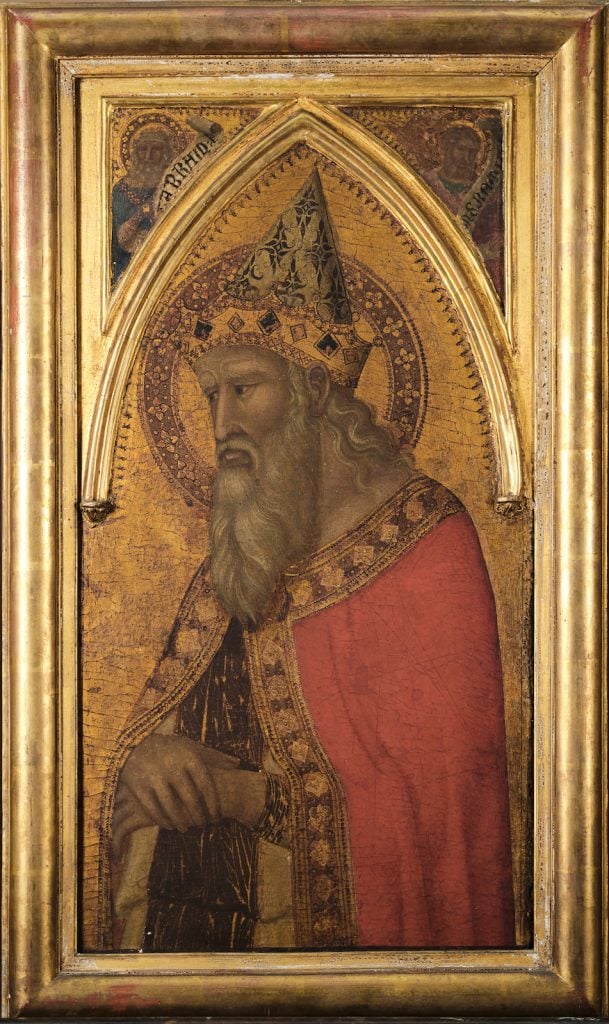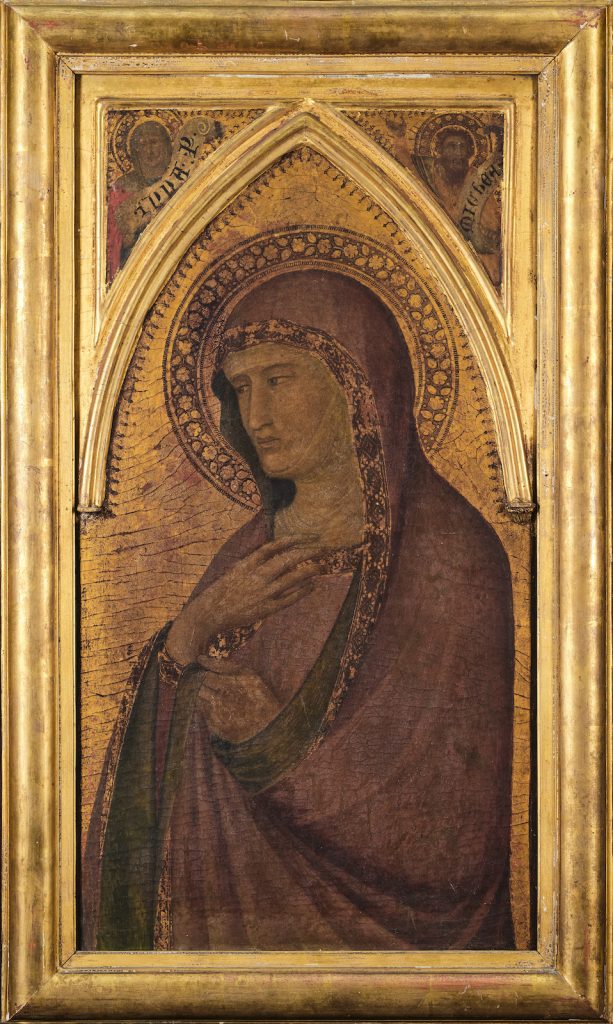Auctions
Two Rare Paintings by Sienese Master Pietro Lorenzetti Come to Light After a Century in Obscurity
The pair of panels is the latest discovery of art historian-detective Eric Turquin.

The pair of panels is the latest discovery of art historian-detective Eric Turquin.

Brian Boucher

The last two known paintings by early 14th-century Sienese master painter Pietro Lorenzetti, from a corpus of only about 30 known works, will come to auction December 13 at Parisian auctioneer Tajan, estimated to sell for as high as $2.8 million between the two, after emerging from where they have languished in obscurity since the mid-19th century.
The pair of works is the latest discovery of art historian-detective Eric Turquin, the head of Paris firm Cabinet Turquin, a specialist in old master paintings who works as an independent expert for about 350 international auction houses. He was described in Artnet News last year as a titan in the field, who rediscovered the holy grail of a previously unknown work by Caravaggio, followed by a seemingly unending parade of Old Master finds.
In fact, three other major early Quattrocentro works alone have recently sold for multimillion-dollar prices in France after Turquin discovered them. These include Cimabue’s La Dérision du Christ, which the Louvre acquired this month after it sold for about $26.5 million with auctioneer Dominique Le Coënt in Senlis. Shortly after that sale came the acquisition by New York’s Metropolitan Museum of Art of Virgin and Child Enthroned (ca. 1350) by the Master of Vyssi Brod for $6.8 million. In 2022, Artcurial sold a small panel by Bernardo Daddi for $1.4 million.
As for Lorenzetti, little is known of the artist’s life. Likely a pupil of Duccio, he was active in Siena from 1306–45, and probably died from the plague in 1348. His younger brother, Ambrogio, was also an artist, and the two injected some naturalism into otherwise mystical Sienese art. Pietro’s works reside in collections including the Uffizi Gallery in Florence, Paris’s Louvre Museum, the Metropolitan Museum of Art in New York, and the National Gallery of Art in Washington, D.C.
The two rediscovered panel paintings, fragments from a larger altarpiece, depict Saint Sylvester and Saint Helena. They come from the descendants of 19th-century collector Alfred Ramé, who read about Turquin’s discoveries and emailed him a photo of the paintings, asking if they might have some value.

Pietro Lorenzetti, Saint Helena. Courtesy Tajan.
“Within minutes, they had a telephone call from us,” Turquin told Artnet News in a phone interview on Tuesday. Ramé had acquired them from an unknown source in Paris in 1860. A high court magistrate, his archives were donated to the Musée Archeologique de Rennes. His descendants held on to these paintings, which were probably part of a larger altarpiece that was dispersed in the 19th century.
Saint Sylvester bears an estimate of €1.5 to €2 million (about $1.6 to $2.2 million) and Saint Helena is tagged at €400,000–600,000 (about $437,000–$656,000). The discrepancy between the estimates is explained by the divergent conditions of the two panels.
Only nine works by the artist have come to auction since 1995. His current auction record is $8 million, set by Christ Between Saints Peter and Paul at Christie’s London in 2012, far exceeding its high estimate of about $2.4 million. The most recent sale was a work attributed to him, The Virgin and Child enthroned with Saint Catherine of Alexandria and Saint John the Baptist, which fetched about $80,000 at Sotheby’s London in 2021, within estimate.
“I never thought I could find a Lorenzetti and to have two large panels in good condition is more than a privilege, it’s a gift from Providence,” said Turquin. Because Lorenzetti’s panel paintings come to auction so rarely, Turquin said, he had little to base his suggestions for pricing on, and so he would say the estimates are low.
“They are really a discovery,” Turquin said. “They were absolutely unknown to anybody, even to the owners. They had no idea these were early Sienese.”
Saint Sylvester served as pope from 314 to 335 during the reign of Emperor Constantine I, ruling over the Church during a pivotal moment in Christianity. He is shown wearing a Byzantine crown, symbolic of his key roles in the struggles between Rome and Byzantium. Constantine was the first Roman Emperor to tolerate, then embrace Christianity, even becoming baptized by Saint Sylvester. For her part, Helena was an empress who converted and worked to spread the Christian faith. According to legend, Helena created the true cross of Christ.
“Saint Sylvester was a pope, so he was a man of great power,” said Turquin. “He had an army, he could print money. But he was a man of principle. This is what the artist has rendered, in a most delicate way. He’s looking down, not facing you like a ruler should do. His hands are crossed in a very humble way.
“This is why Lorenzetti is so important,” he went on. “He was painting roughly 100 years after the death of Saint Francis, who brought human feelings into religion. Painters like Cimabue and Lorenzetti introduced this into paintings. He transformed icons—stiff and majestic, full of symbolic power—into real paintings that move you, and this is why they are worth so much. They are at the origin of Western painting.”
More Trending Stories:
How an Exclusive NYC Cult Influenced the 1970’s Art Scene
A Rare Soulages Lithograph Possibly Worth $30,000 Sells For $130 in Facebook Marketplace Mishap
Masterpiece or Hot Mess? Here Are 7 Bad Paintings by Famous Artists
Is There a Hat Better Than Napoleon’s? We Rank Art History’s 5 Most Iconic Chapeaux